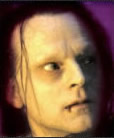Forum
Welcome Guest |
|
|---|---|
 Author Author |
Topic: |
|---|
| PotbellyHairyfoot |
|
||||||||
| danja_san |
|
||||||||
| Celebrian |
|
||||||||
| danja_san |
|
||||||||
| Celebrian |
|
||||||||
| newsgirl |
|
||||||||
| PotbellyHairyfoot |
|
||||||||
| Rulea |
|
||||||||
| danja_san |
|
||||||||
| Fattybolger |
|
||||||||
| Celebrian |
|
||||||||
| Fattybolger |
|
||||||||
| Celebrian |
|
||||||||
| Fattybolger |
|
||||||||
| Celebrian |
|
||||||||
| PotbellyHairyfoot |
|
||||||||
| Rulea |
|
||||||||
| Fattybolger |
|
||||||||
| Feouran_Malkatan |
|
||||||||
| Morwinyoniel |
|
||||||||
| PotbellyHairyfoot |
|
||||||||
| Feouran_Malkatan |
|
||||||||
| atalante_star |
|
||||||||
| Fattybolger |
|
||||||||
| atalante_star |
|
||||||||
| Fattybolger |
|
||||||||
| cirdaneth |
|
||||||||
| tarcolan |
|
||||||||
| Huin |
|
||||||||
| Members Online |









 Barrow-wights
Barrow-wights





